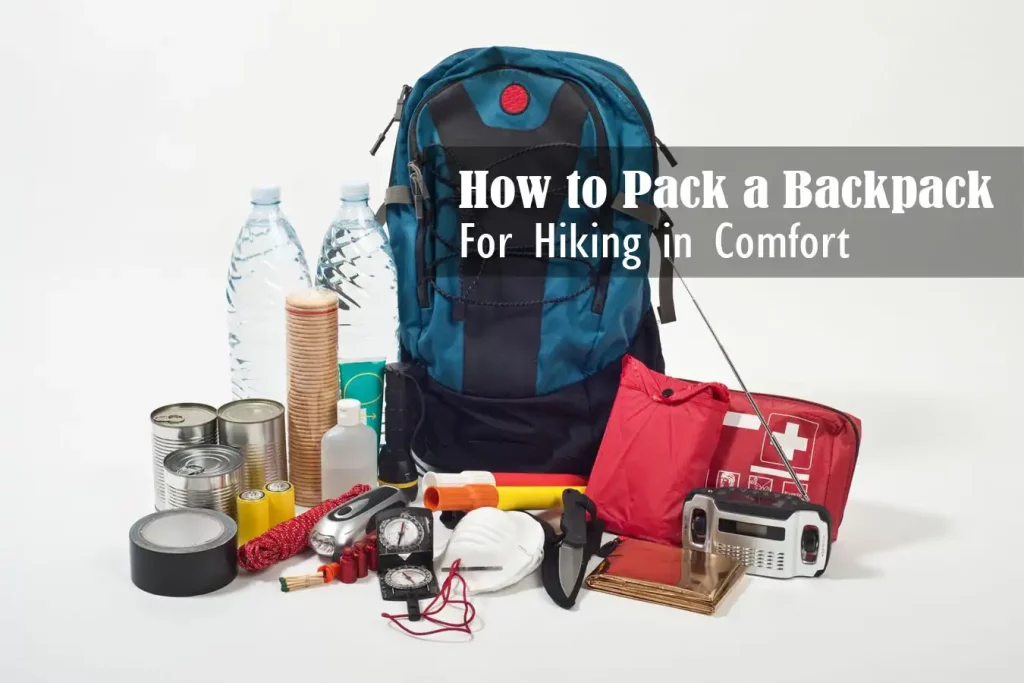It may simple to pack a backpack for hiking, but there is an art to it that may make or ruin your outdoor experience.
Ever felt that nagging back pain just a few miles in?
Let’s dive into some secrets that will not only save your back but also keep you hiking in comfort, so that the journey becomes as enjoyable as the destination!
The Anatomy of a Hiking Backpack
Different Parts of a Hiking Backpack and Their Purpose
A hiking backpack isn’t just a bag; it’s an arsenal carrying your survival tools. It’s made up of multiple parts, each designed for a specific purpose. The main compartments carry your gear, clothing, and food. The top lid pocket is ideal for items you need quick access to, like a map or a snack.
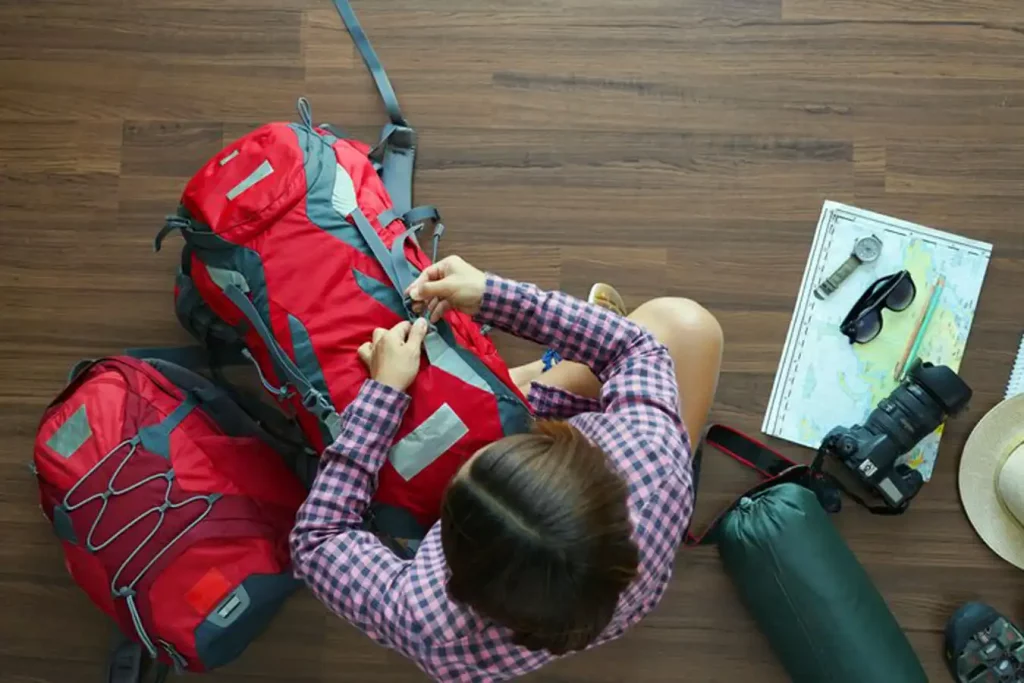
Side pockets are perfect for water bottles or small tools, and hip belt pockets are just the right size for your compass or energy bars. Lastly, the compression straps help to keep the bag compact and balanced.
Hiking Backpack Sizes and Their Suitable Uses
Backpack sizes vary, with their capacity measured in liters. For a one-day hike, a backpack with a capacity of up to 30 liters is usually sufficient. If you’re going for a multi-day hike or a camping trip, you’ll need a larger backpack, typically between 40 to 70 liters, depending on your gear and supplies.
Also learn: What Material is a Backpack Made Of
The Basic Principles of Pack a Backpack for Hiking
Packing a backpack isn’t rocket science, but it does require some thought and organization. The idea is to maximize space, balance weight, and ensure easy access to essential items.
Balance: Understanding Weight Distribution
Packing a backpack is an art of balancing weight. Heavier items should go towards the middle of the backpack and close to your back to keep the center of gravity close to your body. This helps in maintaining balance and posture while walking or climbing. Items such as cooking gear, food, and water reservoirs are usually the heaviest and should be placed in this area.
Accessibility: Packing According to Need and Frequency of Use
Your backpack is not a bottomless pit, and digging through it in search of that one tiny thing can be really frustrating. Hence, it’s important to pack according to the frequency of use. Items that you’ll need frequently like maps, snacks, water, or rain gear should be placed at the top or in the outer pockets for easy access.
Compression: The Role of Packing Tightly in Space Utilization and Stability
Using every inch of space in your backpack is crucial. Compressible items like clothing and sleeping bags can be packed tightly to use up minimal space. Many backpacks come with compression straps that help condense your pack’s overall volume, giving it a tighter, more stable load.
Protection: Safeguarding Fragile and Important Items
The last thing you need during a hiking trip is a broken compass or a soaked sleeping bag. Protect fragile items by wrapping them in clothing or packing them in the center of your backpack. Waterproof items by using waterproof stuff sacks or lining your backpack with a trash compactor bag.
Read more: How Much Should a Backpack Weigh
Equipment You Need: An Itemized Breakdown
Embarking on a hiking adventure? Before you start packing, it’s essential to gather all the equipment you need. Let’s break it down into categories.
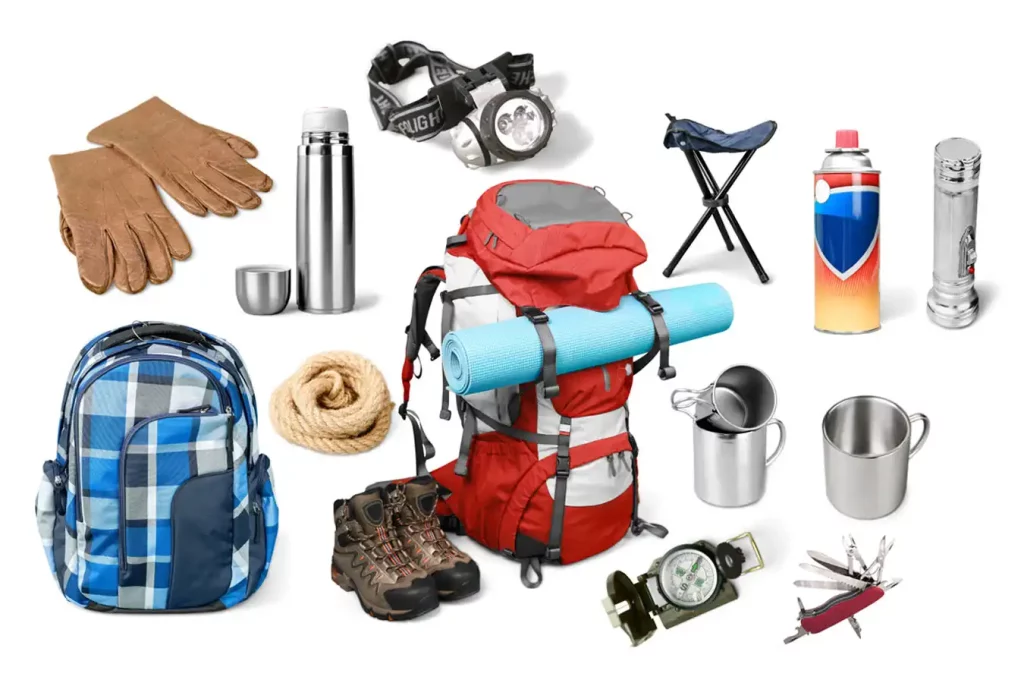
Essential Gear
When you’re out in the wild, certain items are non-negotiable. You’ll need:
- Navigation Tools: Don’t rely solely on digital maps; always bring a physical map and compass as backups.
- First-Aid Kit: Accidents happen. Make sure to pack a well-stocked first-aid kit for emergencies.
- Multi-tool: A multi-tool is like a compact toolbox. It can come in handy for everything from opening cans to making equipment repairs.
Clothing and Personal Items
Personal items will differ depending on the individual, but don’t forget:
- Weather-Appropriate Clothing: Pack layers to accommodate fluctuating temperatures and weather conditions.
- Toiletries: Travel-sized toiletries are best for hiking. And remember – leave no trace! Pack out what you pack in.
Food and Water
Hydration and nutrition are critical on the trail. Plan ahead:
- Meal Planning: Opt for lightweight, high-energy foods. Dehydrated meals, nuts, and energy bars are excellent choices.
- Water Purification Tools: Don’t assume you’ll have access to clean water. Bring purification tablets or a water filter.
Shelter and Comfort Items
These are items that will make your overnight stay comfortable:
- Tent: Your home away from home. Ensure it’s suitable for the expected weather conditions.
- Sleeping Bag and Pad: Pick a sleeping bag rated from Amazon for the expected night-time temperatures. A sleeping pad adds an extra layer of comfort and insulation.
Read next: How to Make Backpack Straps Longer
Step-By-Step Guide to Pack a Backpack for Hiking
With your gear ready, let’s dive into the step-by-step guide on packing your backpack.
Bottom Layer
Begin by packing items you’ll only need at your camp:
- Sleeping Bag and Pad: They are lightweight and won’t be needed until you set up camp.
- Other Camp-Only Items: These include your nighttime clothes, camp shoes, and any other items you won’t need until you stop for the day.
Middle Layer
Next up are the items that are a bit heavier but won’t be needed until you make camp:
- Cooking Gear: Nest your stove and fuel inside your cookpot to save space.
- Food: Pack it inside a bear-proof container if you’re hiking in bear country.
- Extra Clothing: Roll your clothes to save space and keep them in a waterproof sack to stay dry.
Top Layer
The top layer is for items that you might need to access during your hike:
- Rain Gear: If the weather changes, you want your rain gear within easy reach.
- First-Aid Kit: Keep it accessible for emergencies.
- Snacks and Lunch: You’ll want to eat without having to unpack your entire bag.
Outer Pockets and Attachments
Finally, use your backpack’s outer pockets and attachment points for quick-grab items and larger gear:
- Water Bottles: Hydration is critical! Keep water easily accessible.
- Map and Compass: You’ll need these for navigation.
- Tent Poles and Other Large Items: Use the loops and straps on your backpack to secure these.
Remember, every pack job will be unique, depending on your equipment and the specifics of your trip. Practice packing before your hike to ensure everything fits and is comfortable to carry.
Diagram: Packing a Hiking Backpack
Finally, let’s look at a simple diagram that encapsulates all we’ve discussed. Imagine your backpack as a vertical cross-section:
- Bottom: Sleeping bag and pad.
- Middle: Heavy items like food and cooking gear.
- Top: Frequently used items like snacks and first-aid kit.
- Outer Pockets: Easy-access items like water, map, and compass.
There’s an art to packing a backpack for hiking. Imagine an illustrated guide showing how each piece fits together, just like a jigsaw puzzle. It’ll illustrate how the sleeping bag settles into the bottom of the bag, followed by the middle layer of food and clothing, with frequently used items on top.
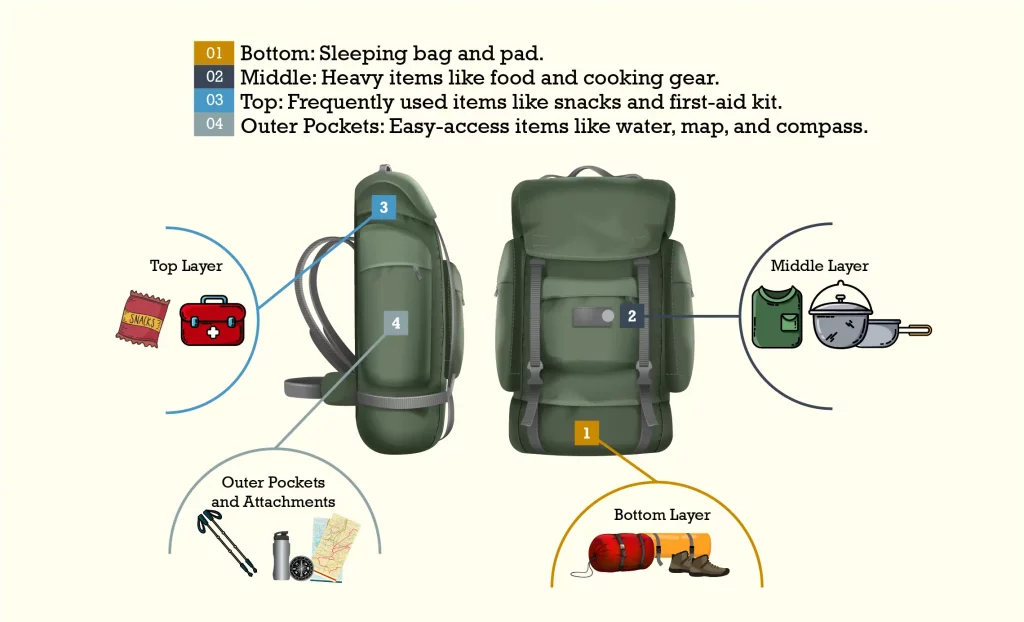
It’s hard to visualize, right?
Remember, every trip might require a slightly different packing strategy depending on your specific needs and the conditions you expect to face. But with these general guidelines, you’re well on your way to becoming a master backpack packer. Watch below how to attach the essential items to the backpack:
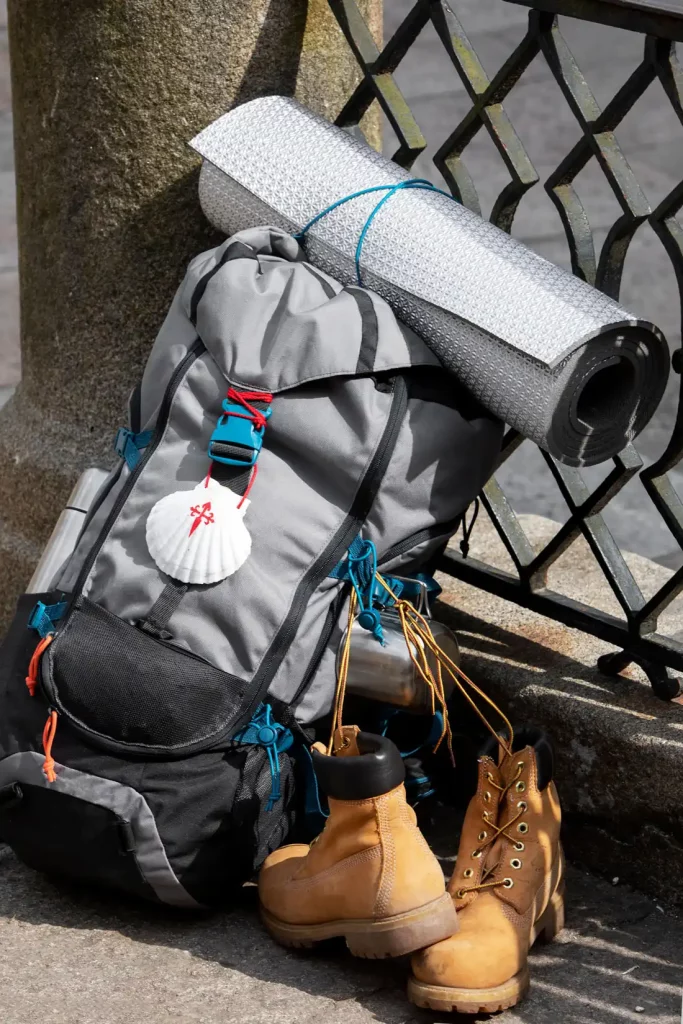
An infographic is a highly effective way of visualizing complex information. When it comes to hiking, packing your backpack correctly is a skill that requires knowledge of the items you’ll need, as well as an understanding of how to distribute weight effectively to maximize comfort and efficiency. Let’s take a closer look at the various elements of this hiking infographic:
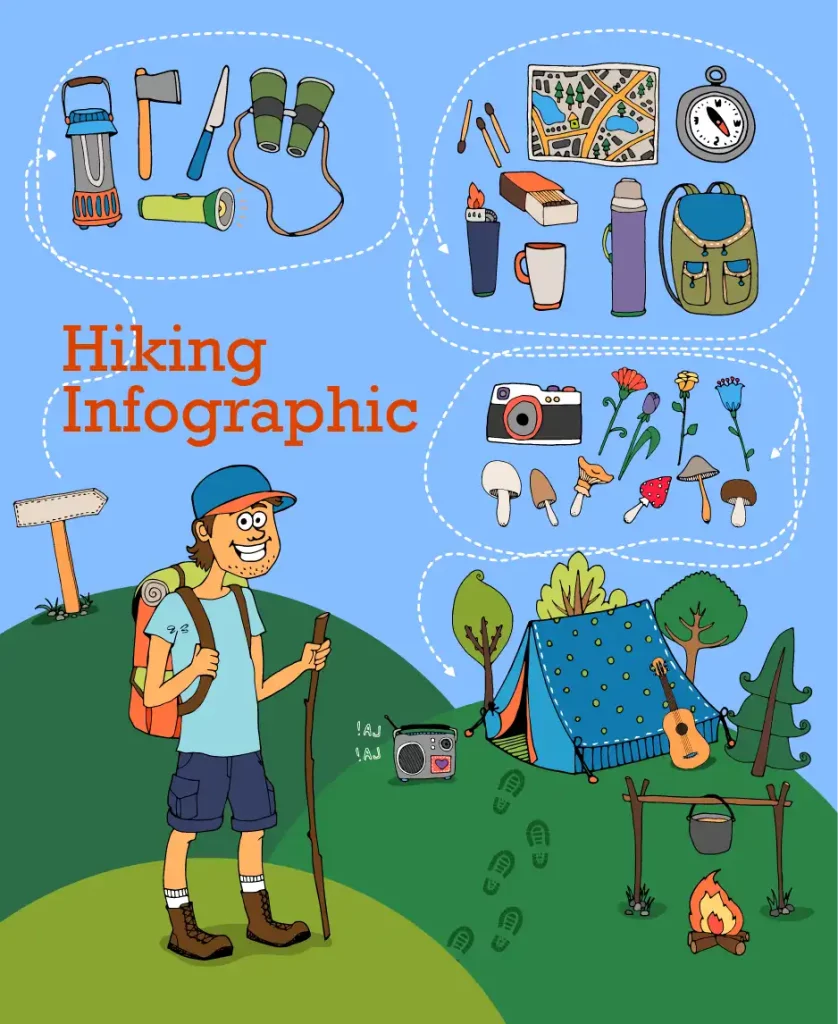
Common Mistakes to Avoid When Packing
Even seasoned hikers can sometimes trip up when packing their backpacks. Let’s discuss some common mistakes so you can avoid them:
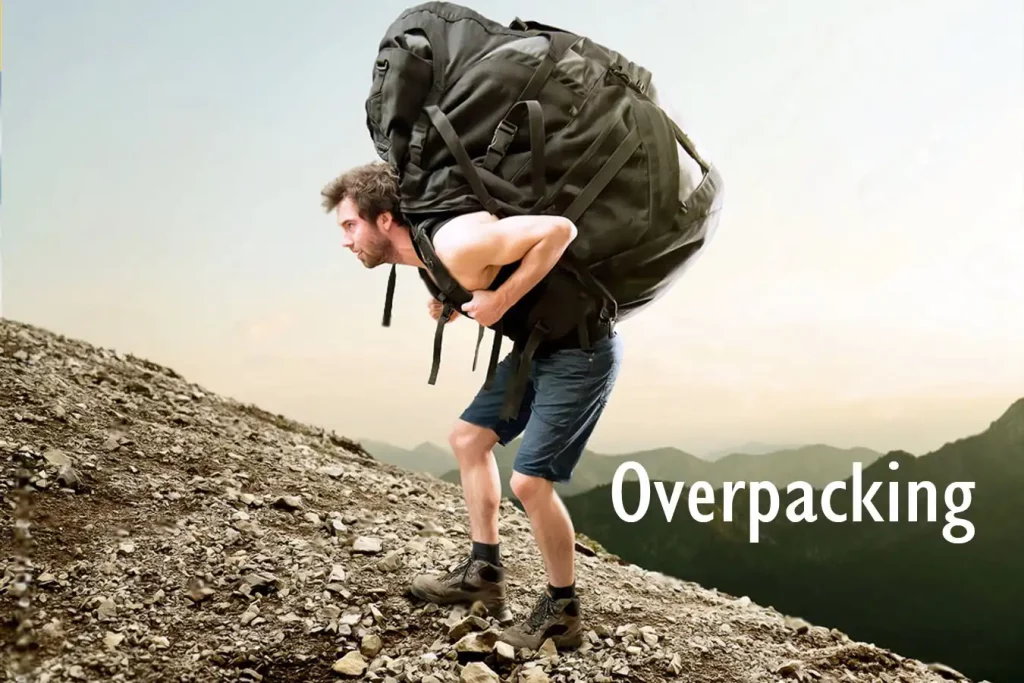
- Overpacking: It’s tempting to pack items for every possible scenario, but this results in a heavy backpack and a burdensome hike. Stick to the essentials and remember that less is often more in the wild.
- Imbalance: A poorly balanced backpack can lead to discomfort and even injury. Keep heavy items in the middle of your backpack and close to your back for better weight distribution.
- Ignoring Weather Conditions: Always check the weather forecast before packing. You don’t want to be caught without a rain jacket during a downpour or without a hat in the scorching sun.
Avoiding these common missteps can significantly enhance your hiking experience.
Tips for Backpacking Efficiently
Backpacking efficiently is a skill that improves with experience. However, some tips can speed up the learning curve:
- Choosing the Right Backpack: Size, fit, and features matter. Your backpack should match the length of your trip and fit your body comfortably.
- Reducing Weight: Every ounce counts when you’re carrying your home on your back. Invest in lightweight gear, choose multi-purpose items, and repackage items to save weight.
- Organization is Key: Use smaller bags or compression packing cubes to group items together. This will help you locate items quickly without having to unpack your entire backpack.
Remember, what works for one person may not work for another. The most efficient way to pack is the one that fits your personal needs and hiking style best. It’s all about hitting the trail with comfort and confidence.
To know more: Snow Boots Vs Hiking Boots
FAQs about Pack a Backpack for Hiking in Comfort
What is the best way to pack a hiking backpack?
The best way to pack a hiking backpack is by distributing weight evenly, placing heavy items close to your back and at the center, and packing essentials within easy reach. This ensures comfort and balance during the hike.
How do you pack a hiking backpack for one day?
For a one-day hike, pack light essentials like water, snacks, a first aid kit, a map or GPS, weather-appropriate clothing, and personal items. Place them in separate compartments for easy access.
How do you pack a backpack for a thru-hike?
Packing for a thru-hike requires careful planning, including lightweight gear, essential clothing layers, a compact sleep system, cooking supplies, and enough food to last between resupply points. Organization and using compression sacks can help maximize space.
How do you pack a backpack smartly?
To pack a backpack smartly, use packing cubes or compression sacks to organize items, place heavier things near your back, roll clothing to save space, and keep frequently used items like water bottles and maps in easily accessible pockets.
Final Thoughts on Pack a Backpack for Hiking
Packing a backpack for a hiking trip is an art as much as it is a science. It requires forethought, a clear understanding of your needs, and an awareness of the conditions you’ll encounter.
By following this guide, you’ve learned how to pack your backpack for balance, accessibility, and protection of your items. You’ve also understood how to choose essential gear, clothing, and food, and gained insights into common packing mistakes to avoid and tips for efficient backpacking.
Remember, the goal isn’t just to fit everything in – it’s to pack in a way that ensures your hike is as enjoyable and stress-free as possible. Happy hiking!
Read more: How to Pack Eggs for Camping

